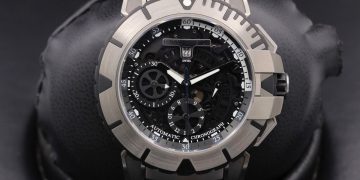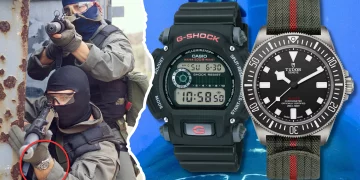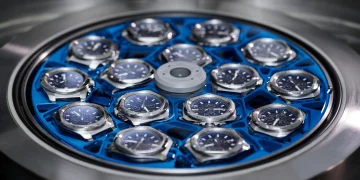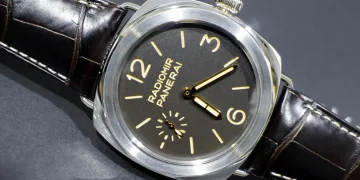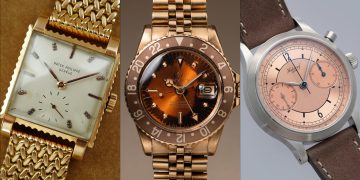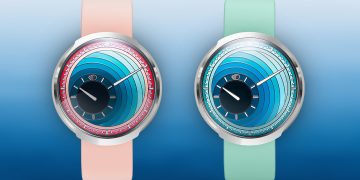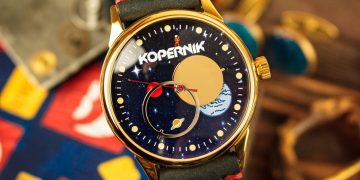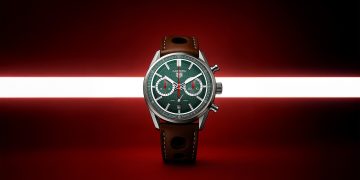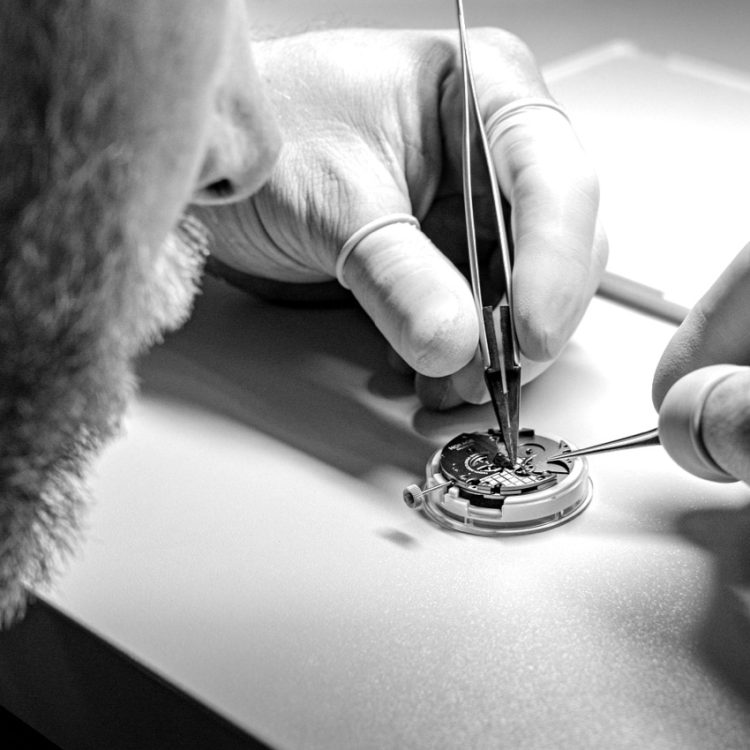Introduction:
A watch is more than just an accessory; it’s an investment in craftsmanship, technology, and design. Whether it’s an automatic mechanical watch, a quartz timepiece, or a luxury watch, keeping it in good working condition is essential to ensure it continues to perform accurately and remains a reliable companion in your daily life. But how do you know when your watch needs repair or maintenance?
While regular servicing is recommended for all watches, recognizing the early signs that a watch requires attention can help you address potential problems before they become major issues. This article will help you understand how to identify when your watch needs servicing and the common indicators that it might be time for a repair.
1. Watch Stops or Loses Time
1.1 Automatic and Mechanical Watches
For automatic mechanical watches, a common sign that the watch needs attention is when it stops functioning or starts losing time. Since these watches rely on the motion of your wrist to wind the mainspring and keep the watch running, a lack of movement can cause it to stop. However, if the watch has been worn regularly and still stops, it could be a sign of an internal problem.
- What to Check: The power reserve is an important factor. If the watch has a short power reserve or stops within a day of not being worn, this could indicate an issue with the mainspring, escapement, or other key components. In this case, it’s time for a service to check the movement.
- What it Means: If the watch is running but losing time (more than a few minutes per day), it could mean that the movement is out of calibration. This may be caused by wear on internal components or a lack of proper lubrication.
1.2 Quartz Watches
For quartz watches, if your watch stops or begins to lose time, it’s most likely due to the battery running out of charge. However, if replacing the battery doesn’t resolve the issue, there may be a problem with the movement itself, such as a malfunctioning circuit or damaged components.
- What to Check: If a new battery does not resolve the issue, it may be time to bring the watch to a professional to check for potential damage or wear in the movement.
2. Watch Has Moisture or Condensation Under the Crystal
One of the most obvious signs that a watch needs servicing is the presence of moisture or condensation under the crystal. This usually happens when the watch’s water resistance is compromised, allowing moisture to enter the case.
- What to Check: If you notice condensation forming, it’s crucial to get the watch checked immediately. Even if you’ve never taken the watch into water, moisture can get in if the seals are worn or damaged.
- What it Means: If the watch is exposed to moisture, it can cause internal rust or damage to the movement. The gaskets and seals that protect the watch from water damage can degrade over time, especially after a few years of wear. Repairing the seals and thoroughly cleaning the watch to remove any moisture is essential.
3. The Watch’s Hands or Date Function Are Not Moving Properly
If you notice the hands or date function of your watch are either misaligned, stuck, or not advancing as they should, this may be a sign of a malfunction.
3.1 For Automatic and Mechanical Watches
- Hands: A misaligned or stuck hour, minute, or second hand could be due to a mechanical issue such as a broken component in the movement. The geartrain may have become jammed, or there could be a problem with the hands themselves.
- Date Function: In mechanical watches, the date-change mechanism could also fail or become misaligned. This can cause the date to skip, display incorrectly, or fail to change at the correct time.
3.2 For Quartz Watches
- Hands: If the hands are stuck, or not advancing at all, the issue could be with the stepping motor or a damaged component in the movement.
- Date Function: A quartz watch with a date display could fail to change the date at the proper time or may display the wrong date entirely if the mechanism fails.
- What it Means: Misaligned hands or malfunctioning date functions usually signal that the watch requires a professional repair to fix the internal movement.
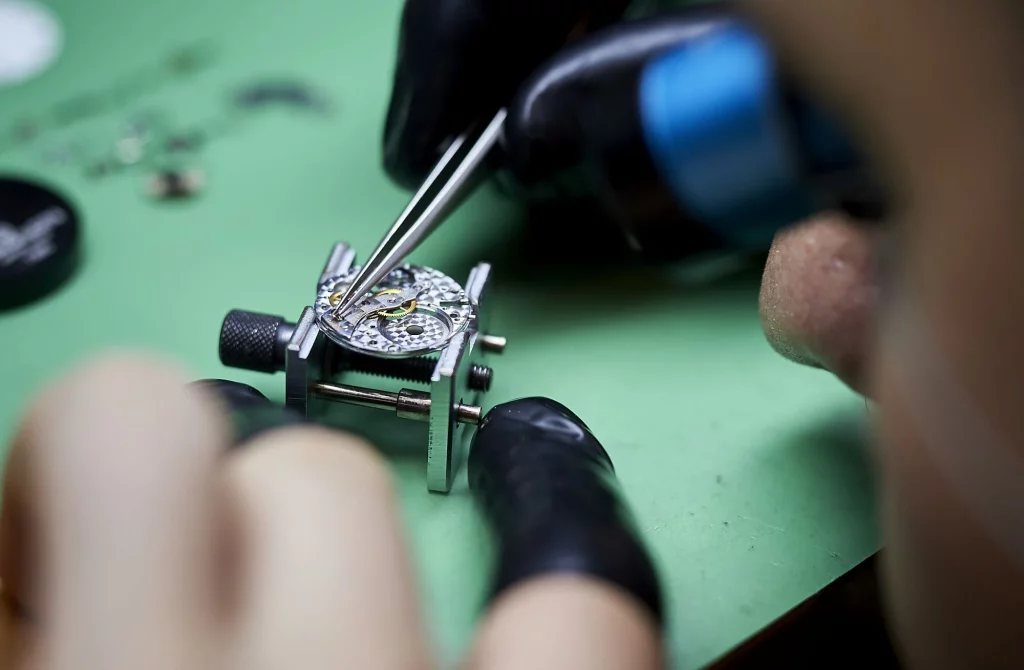
4. The Watch Is Not Keeping Accurate Time
Accuracy is a hallmark of any quality watch. If your watch starts to lose or gain time at an unusually high rate, it may be time for maintenance or repair.
4.1 For Automatic Watches
- What to Check: If an automatic watch starts losing or gaining several minutes per day, it may have issues with the balance wheel, escapement, or lubrication. The watch may need a service to clean, lubricate, and recalibrate the movement to restore its accuracy.
4.2 For Quartz Watches
- What to Check: If a quartz watch is not keeping accurate time, this may indicate an issue with the crystal oscillator or other electrical components in the movement. A simple battery change might solve the problem, but if the issue persists, it could require repair.
5. Watch Case or Crystal is Scratched or Damaged
While scratches on the case or crystal don’t necessarily affect the watch’s functionality, they can diminish its appearance and value—particularly for high-end or vintage watches.
5.1 Scratched or Cracked Crystal
- What to Check: If the sapphire crystal is scratched or cracked, it can compromise the clarity of the watch face. While minor scratches may be removed with professional polishing, deeper cracks could require a crystal replacement.
- What it Means: A cracked crystal not only affects the appearance of the watch but could also expose the movement to dust, dirt, and moisture. Repairing or replacing the crystal is important to maintain the overall integrity of the watch.
5.2 Damaged Case
- What to Check: For a scratched or dented case, a professional refinishing service can help restore the original look. Polishing can remove minor scratches, but deeper dents or significant damage might require more extensive repairs.
- What it Means: Significant damage to the case may affect the value of the watch, especially for high-end or collectible timepieces. Restoring the case may be necessary to maintain its condition and appearance.
6. Strange Noises or Uneven Movement
If you start hearing unusual sounds or notice uneven ticking in your mechanical watch, this could indicate a problem with the movement. A healthy mechanical watch should tick smoothly, without excessive noise or irregularities in the motion of the hands.
- What to Check: A grinding or unusual ticking sound could be caused by a broken gear, worn-out lubricants, or misalignment in the movement.
- What it Means: If there is an abnormal noise coming from your watch, it’s important to have it checked as soon as possible. Ignoring it can lead to further internal damage.
7. Overwhelming Wear and Tear on the Strap or Bracelet
Though this is not always a sign of a mechanical issue, excessive wear on the strap or bracelet can affect the watch’s functionality and aesthetic appeal. If the strap has become too loose, brittle, or damaged, the watch may not stay securely on your wrist.
- What to Check: If the strap is uncomfortable, discolored, or cracked, it might be time for a replacement. Leather straps tend to wear out quicker than metal bracelets, so these may need to be replaced periodically.
- What it Means: Wearing a damaged strap may lead to further deterioration, especially for leather or fabric bands. It’s best to replace a worn-out strap to ensure the watch remains comfortable to wear.
Conclusion:
Knowing when your watch needs repair or maintenance can save you from more significant issues down the line. Regular observation and attention to the signs above can help identify potential problems early, preventing further damage. Whether your watch is losing time, showing condensation, or simply not functioning properly, getting it serviced by a professional watchmaker or authorized service center is key to keeping your timepiece in optimal condition.
If your watch is valuable—especially if it’s an automatic or luxury watch—maintaining its condition through regular servicing is vital. Ultimately, proper care ensures that your watch continues to perform as intended, preserving its accuracy, aesthetics, and longevity for years to come.



